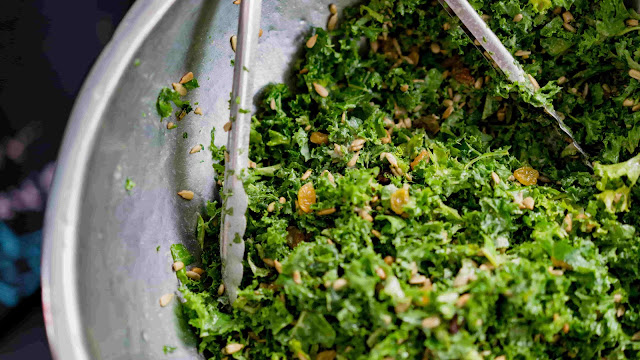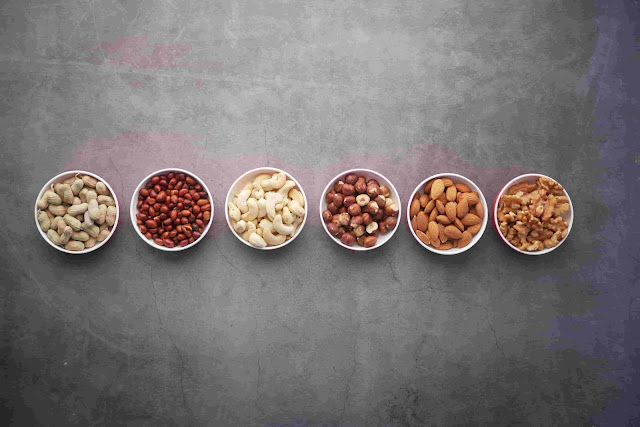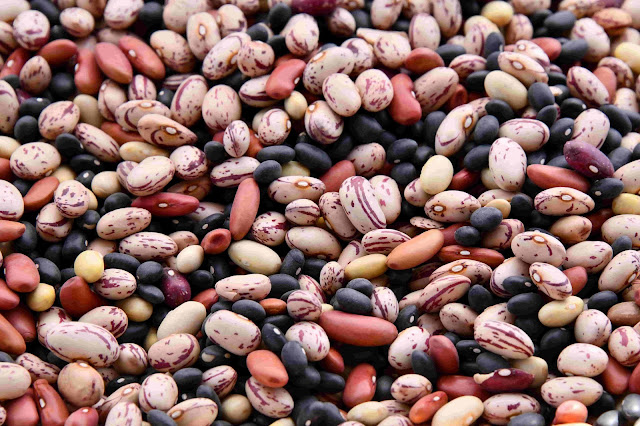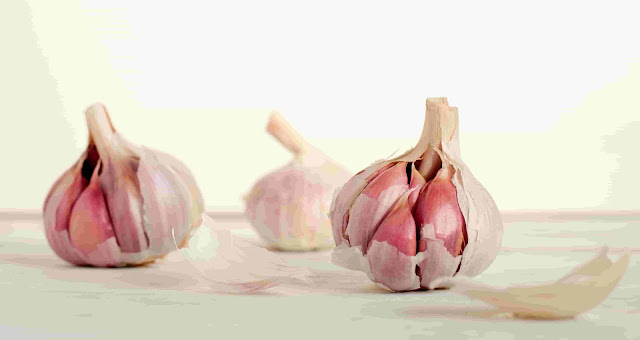Super Healthy foods for diabetes patients
Super healthy foods are nutrient-rich foods that are considered to be particularly beneficial for health and well-being. Examples of super healthy foods include berries, leafy green vegetables, salmon, nuts and seeds, and whole grains. These foods are often high in antioxidants, vitamins, and minerals, and may help to boost the immune system, reduce the risk of chronic diseases, and improve overall health.
Leafy green vegetables
Leafy green vegetables are low in calories and carbohydrates, making them a suitable option for diabetes patients who need to manage their blood sugar levels.
These veggies are high in fiber, which can help control how quickly the body absorbs glucose and delay the release of sugar into the blood.
Leafy greens are also a good source of vitamins and minerals, including vitamins A, C, and K, as well as iron, calcium, and magnesium, which are essential for maintaining good overall health.
Eating leafy greens may also help improve insulin sensitivity, which is important for managing diabetes.
In addition, leafy green vegetables are often high in antioxidants, which can help protect against chronic diseases like diabetes.
Fatty fish
Fatty fish are fish that are high in omega-3 fatty acids, which are essential for good health. Examples of fatty fish include salmon, mackerel, herring, and tuna. These fish are often recommended as part of a healthy diet because they are low in saturated fat and provide important nutrients such as protein, vitamins, and minerals. Eating fatty fish can help to reduce the risk of heart disease, stroke, and other chronic health conditions.
Fatty fish benefits for diabetes patients
Fatty fish such as salmon, mackerel, and sardines are rich in omega-3 fatty acids, which can help reduce inflammation and improve insulin sensitivity in the body.
The protein and healthy fats in fatty fish can help regulate blood sugar levels, which is important for managing diabetes patients.
Consuming fatty fish may also lower the risk of developing heart disease, a common complication of diabetes.
The vitamins and minerals found in fatty fish, such as vitamin D and selenium, can support the immune system and promote overall health.
Fatty fish can be a delicious and satisfying addition to a diabetes patient-friendly diet, providing important nutrients and helping to control hunger and cravings.
Whole grains
Whole grain refers to grain that has not been refined, meaning the entire grain kernel (including the bran, germ, and endosperm) is used. Whole grains are a rich source of fiber, vitamins, minerals, and antioxidants, and have been linked to numerous health benefits such as improved digestion, heart health, and weight management. Examples of whole grains include whole wheat, oats, quinoa, brown rice, and barley.
Whole grains benefits for diabetes patients
Whole grains are a good source of fiber, which can help control blood sugar levels and improve insulin sensitivity.
They are also rich in vitamins, minerals, and antioxidants, which can help support overall health and reduce the risk of complications associated with diabetes, such as heart disease and nerve damage.
Whole grains can also help with weight management, as they tend to be more filling and satisfying than refined grains, which can help prevent weight gain and improve blood sugar control.
Additionally, whole grains can help lower cholesterol levels, reduce inflammation, and improve digestive health, all of which can have a positive impact on diabetes management.
All things considered, including whole grains to a diabetes care strategy can boost general health and enhance blood sugar control.
Nuts and seeds
Nuts and seeds are a type of food that is rich in nutrients and are considered to be a good source of protein, healthy fats, vitamins, and minerals. Examples of nuts and seeds include almonds, walnuts, peanuts, cashews, pumpkin seeds, sunflower seeds, and sesame seeds. These foods can be eaten on their own as a snack, added to salads and other dishes, or used as an ingredient in baked goods and other recipes. Many people choose to eat nuts and seeds as part of a balanced and healthy diet.
Nuts and seeds benefits for diabetes patients
Nuts and seeds are a great source of healthy fats, protein, and fiber, which can help regulate blood sugar levels and improve insulin sensitivity.
Additionally, they are a great source of vitamins, minerals, and antioxidants, which can strengthen the immune system and guard against chronic illnesses like diabetes.
Because they are low in carbohydrates, nuts and seeds are a good option for diabetics who need to control their carbohydrate intake.
They may offer a filling and nutrient-rich snack that can assist in reducing cravings and avert overeating.
Regular nut and seed eating has been demonstrated to lower blood pressure, lower cholesterol, and promote overall heart health, all of which are important for diabetics because they are more likely to develop heart disease.
Nuts and seeds can also help promote weight loss and healthy weight management, which can improve overall health and reduce the risk of complications associated with diabetes.
Berries
Berries are small, juicy, often sweet fruits that are typically eaten raw. They are often eaten as a snack or used as a topping for desserts, cereals, and salads. Examples of common berries include strawberries, raspberries, blackberries, blueberries, and cranberries. Berries are rich in vitamins, minerals, and antioxidants, making them a nutritious and tasty addition to any diet.
Benefits of berries for diabetes patients
Berries don't raise blood sugar levels because they are low in sugar and have a low glycemic index.
They are packed with antioxidants, which can help protect against oxidative stress and inflammation, which are common in diabetes patients.
Berries are also high in fiber, which can help regulate blood sugar levels and improve digestive health.
It has been demonstrated that some berries, such as blueberries, can increase insulin sensitivity and lower the risk of type 2 diabetes.
Berries are also a great source of vitamins and minerals, including vitamin C, manganese, and potassium, which can help support overall health and well-being.
Legumes
A subclass of plants in the Fabaceae family is legumes. They are known for their high protein content and are commonly used as a source of food for both humans and animals. Beans, peas, lentils, and peanuts are some examples of legumes. Legumes are important for their nutritional value, as well as their ability to fix nitrogen in the soil, helping to improve soil health and crop yields.
Benefits of legumes for diabetes patients
Legumes, such as beans, lentils, and peas, are a good choice for people with diabetes because they are low in fat and calories and high in protein and fiber. This makes them a great source of nutrition without adding unnecessary calories to your diet.
Additionally, legumes are high in antioxidants, which can help reduce inflammation and improve insulin sensitivity, making them an important part of a healthy diet for people with diabetes. They also have a low glycemic index, which means they don't cause a rapid spike in blood sugar levels after being eaten. This can help prevent blood sugar fluctuations, a common problem for people with diabetes.
In conclusion, beans are a beneficial component of a diabetes-friendly diet since they are a healthy and nutritious meal. They provide important nutrients, help maintain healthy blood sugar levels, and can be a tasty and satisfying addition to your meals.
Low-fat dairy
Dairy products that have been intentionally created to be low in fat are known as low-fat dairy products. These products are typically made from skimmed or reduced-fat milk and may include items such as low-fat yogurt, low-fat cheese, and low-fat butter.
Benefits of low-fat dairy for diabetes patients
Low-fat dairy products provide essential nutrients such as calcium, vitamin D, and protein without a significant amount of added fat and calories. This can help prevent weight gain and improve blood sugar control in diabetes patients.
Low-fat dairy products can provide a source of protein and calcium, which can help maintain strong bones and reduce the risk of osteoporosis, a common complication of diabetes.
Some studies have found that consuming low-fat dairy products may help reduce the risk of developing type 2 diabetes or improve blood sugar control in those who already have the condition.
Low-fat dairy products can provide a satisfying, nutritious option for individuals with diabetes who are trying to manage their carbohydrate intake.
Consuming low-fat dairy products can help provide essential nutrients without increasing the risk of heart disease, a common complication of diabetes.
Cinnamon
A spice known as cinnamon is manufactured from the bark of different plants of the Cinnamomum genus. It has a sweet, warm flavor and is commonly used in sweet and savory dishes, as well as in beverages and desserts. Cinnamon is often used in baking, as well as in dishes like curries and stews. It is also used in traditional medicines and has been shown to have potential health benefits, such as lowering blood sugar levels and improving cognitive function.
Benefits of cinnamon for diabetes patients
Cinnamon has been shown to improve blood sugar control in people with diabetes by increasing insulin sensitivity and reducing fasting blood sugar levels.
It may also help lower cholesterol and triglyceride levels, which are common complications of diabetes.
Cinnamon has anti-inflammatory and antioxidant properties, which may help reduce the risk of complications such as heart disease and neuropathy in diabetes patients.
It can also improve digestion and reduce stomach upset, which are common issues in people with diabetes.
Cinnamon has a natural sweetness, which can be used as a sugar substitute in recipes, helping to reduce the amount of added sugar in the diet of a diabetes patient.
It can also add flavor and variety to meals, making them more enjoyable and helping to prevent food boredom and cravings.
Garlic
Garlic is a plant in the onion family that is commonly used as a seasoning in cooking. It is native to Central Asia and has been used for thousands of years for its medicinal and culinary properties. Garlic has a strong, pungent flavor and is known for its health benefits, including reducing the risk of heart disease, lowering blood pressure, and boosting the immune system. It is typically used in dishes like pasta, stir-fries, soups, and marinades.
Benefits of garlic for diabetes patients
Regulates blood sugar levels: Garlic has been shown to improve insulin sensitivity and reduce blood sugar levels in people with diabetes.
Reduces inflammation: Garlic contains compounds that have anti-inflammatory effects, which can help reduce inflammation in the body and improve overall health in people with diabetes.
Lowers cholesterol levels: Garlic has been shown to lower cholesterol levels, which can help reduce the risk of heart disease in people with diabetes.
Boosts immune system: Garlic has immune-boosting properties that can help prevent infections and other illnesses in people with diabetes.
Enhances weight loss: Garlic can help boost metabolism and increase weight loss in people with diabetes, which can help improve overall health and manage the condition.
Turmeric
Spices like turmeric are frequently seen in Middle Eastern and Indian cooking. It is a member of the ginger family and has a bright yellow-orange color. It has a slightly bitter, earthy flavor and is often used in curries, as a natural food coloring, and in traditional medicine. Turmeric is known for its anti-inflammatory properties and is believed to have numerous health benefits, including aiding digestion and reducing the risk of chronic diseases. It is also rich in antioxidants and is often used in skincare and beauty products.
Benefits of Turmeric for diabetes patients
Helps lower blood sugar levels: Turmeric has been shown to have a positive effect on blood sugar levels in diabetes patients. It can help reduce the amount of glucose in the blood and improve insulin sensitivity.
Helps reduce inflammation: Turmeric is a powerful anti-inflammatory agent, which can help reduce the inflammation associated with diabetes. This can help improve overall health and reduce the risk of complications such as heart disease and neuropathy.
Helps protect the liver: Turmeric has been shown to have protective effects on the liver, which is often damaged in diabetes patients. It can help prevent the buildup of fatty deposits in the liver and improve liver function.
Helps improve cardiovascular health: Turmeric has been shown to have a positive effect on the cardiovascular system in diabetes patients. It can help reduce the risk of heart disease and improve blood flow to the heart.
Helps improve overall health: Turmeric has a range of health benefits, including improved digestion, reduced stress, and improved immunity. These benefits can help improve overall health in diabetes patients and reduce the risk of complications.















0 Comments